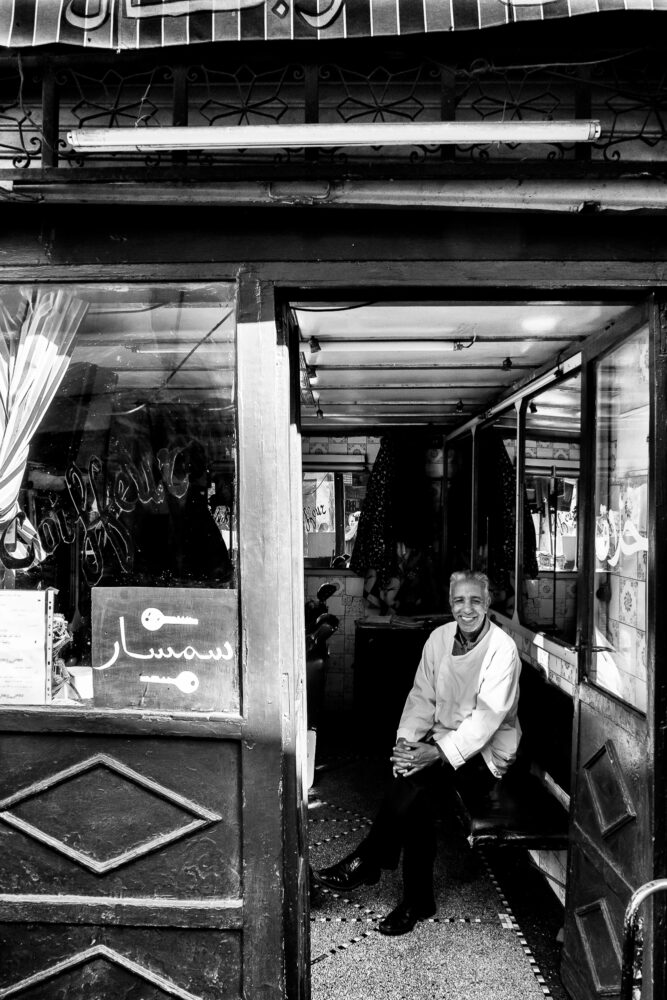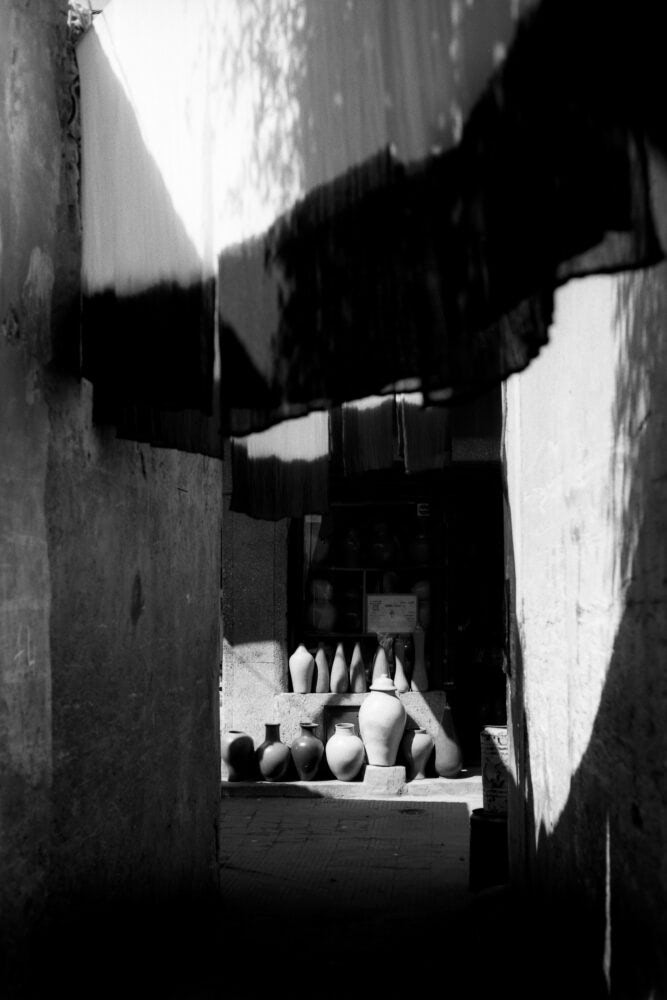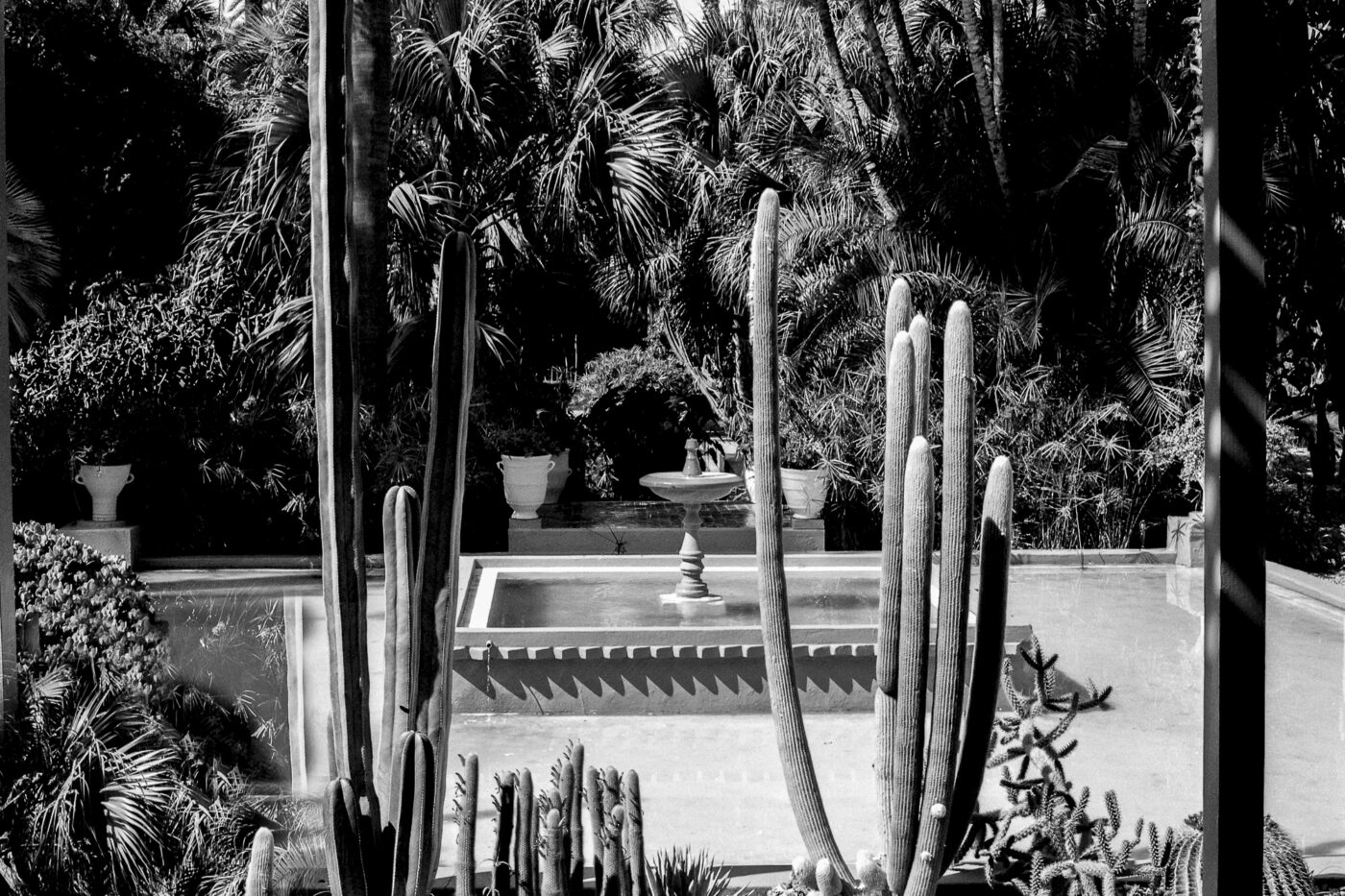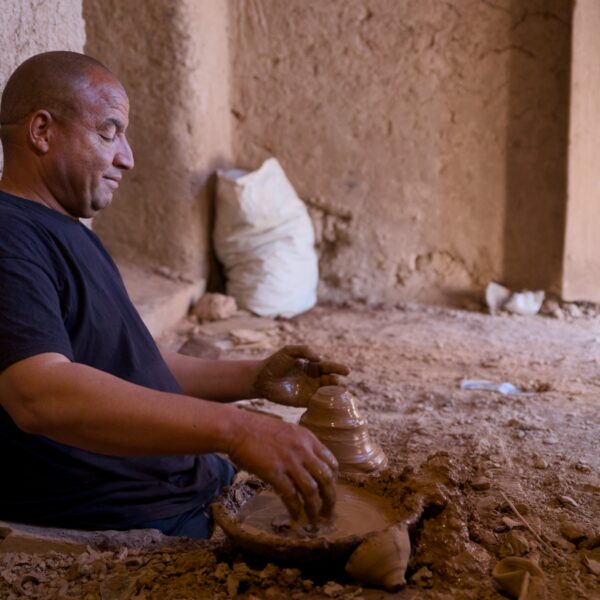There are cities that inspire, places that thrum with history and light, sets so powerfully photogenic they seem crafted for the photographer’s eye. Marrakech is one of these.
Nestled at the foot of the Atlas Mountains, the Red City has, for nearly a millennium, been a cultural, sensory, and visual crossroads. Behind its ochre walls and winding alleys, Marrakech fascinates, sometimes unsettles, but never leaves one unchanged. And for anyone wielding a camera—especially in black and white—it becomes an endless playground of contrast and texture.
To truly grasp Marrakech, one must journey back to its origins: founded in 1071 by the Almoravids, the city quickly became a pivotal political, religious, and commercial hub. Under the Almohad and Saadian dynasties, it reached its golden era, graced by landmarks that still captivate today: the Koutoubia Mosque, the El Badi Palace, the Saadian Tombs… Every stone in the medina whispers its story—a tale shaped by trade with sub-Saharan Africa, Europe, and the Orient, and by a light so unique: dry, sharp, and graphically precise.
It’s this ceaseless dialogue—between architecture and light, between bustling life and silent stone, between deep shadow and blinding sun—that gives Marrakech its visual power, and draws photographers inexorably to its alleys and squares.
Despite—and perhaps because of—its bustling tourism, Marrakech remains a photographer’s dream. Yes, there are selfie sticks in Jemaa el-Fna, tour groups at Ben Youssef Madrasa, and Insta-worthy riads everywhere. But those willing to stray from the beaten path—to wait, to watch, to wander—discover a city that reveals itself in layers.
In the labyrinthine lanes of the medina, light slices through darkness, tracing geometry on worn walls. Shadows dance like silhouettes behind latticed windows and half-closed shutters; everyday scenes become sublime plays of light and shape. Every corner invites you to capture “the moment” — a hand emerging from darkness, a glance beneath a veil, a donkey striding through a sunlit shaft. In Marrakech, black and white isn’t just stylistic—it’s essential. It strips back the decorative to reveal structure, rhythm, design.
From my perspective, this city is a haven for black-and-white photography, its chiaroscuro nature feeding the lens with endless visual tension. Marrakech seems almost designed for it, the natural light so omnipresent, so immersive.
A Love Affair with Great Photographers
This visual intensity has drawn legendary photographers over the decades.
Henri Cartier-Bresson, the master of the decisive moment, ventured here in the 1930s, drawn by the purity of forms, the density of street life, and the geometric frames offered by traditional Moroccan architecture. His work shows deep respect and quiet observation, always looking for that suspended moment.
Robert Capa, another Magnum co-founder, traveled through Morocco in the late 1940s, making stops in Marrakech during his many reportage assignments. Irving Penn—a titan of fashion and portraiture—set up a temporary studio in Morocco in 1971, photographing locals in traditional dress with a minimalistic elegance that still resonates.
And then there’s Jean Besancenot, ethnographic photographer, whose documentation of Moroccan people and costumes from the 1930s remains a benchmark. His Marrakech images go beyond mere anthropology—they’re artful compositions, sensitive and precise.
But Marrakech isn’t only seen through Western lenses. Moroccan photographers have also made the city their muse—a mirror of identity, a stage for introspection.
Daoud Aoulad-Syad, born in Marrakech in 1953, initially pursued physics but wandered into photography in the 1980s. His powerful black-and-white work spans over thirty years, capturing Jemaa el-Fna’s transformations, energy, and poetic intensity. To him, Marrakech is at once familiar and strange, mundane and mythical.
Leila Alaoui, tragically lost in 2016, left a powerful legacy. Her portraits—often taken with a mobile studio—celebrate dignity and presence. Though her work spanned Morocco, Marrakech was a recurring canvas.
The Maison de la Photographie: A Collective Memory in One House
If there’s one place that crystallizes the deep bond between Marrakech and the history of photography, it’s the Maison de la Photographie de Marrakech. Tucked into a medina alley, this restored fondouk has, since 2009, showcased an extraordinary collection of images from the 1870s to the 1950s. It draws from private archives, ethnographic collections, and both anonymous and celebrated photographers.
Inside, you’ll find work by Nicolas Muller, Marcelin Flandrin, George Washington Wilson, and numerous unknown artists whose autochromes and black-and-white prints reveal a forgotten, dreamlike Marrakech. The museum acts as a time machine, unveiling rural Morocco as it once was: mysterious, idealized, and impeccably framed by photographers of a bygone era.
Today, Marrakech continues to magnetize those with cameras. It demands attention with its rhythms, its light, its density. For photographers, it’s both challenge and promise. It isn’t just about taking a picture—it’s learning to truly see the city, to listen, to wait. And if the swarms of tourists sometimes feel overwhelming, a simple sidestep, a bit of patience, and suddenly the city reveals its profound graphical, human, and luminous essence again.




















